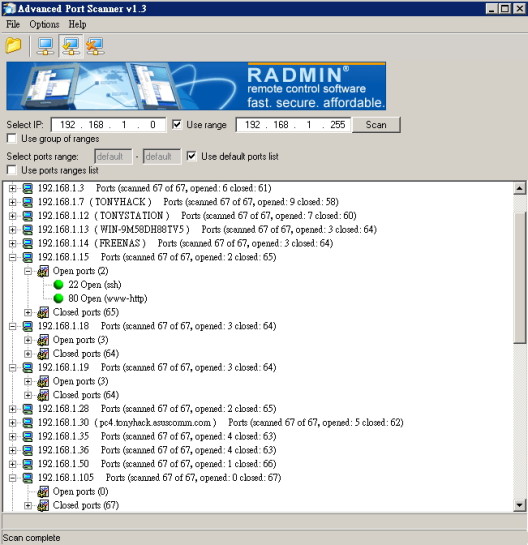
The status of a port (open or closed) can usually be controlled through a network firewall.

When a port is closed, all the traffic specific to that port is blocked, preventing it from entering the local network. When a port is open, data packets are permitted to flow in and out of your local network through that port.

TCP Port scanners can also help penetration testers determine which specific ports are accepting data so that they can be protected from compromise. For maximum security, all free port scanners should be supported with additional security solutions. This is why free open port scanners should only be used by network administrators to determine the level of network visibility available to potential cyber attackers. So they cannot be the only security controls protecting your network. Port scanners are also used by cybercriminals to garnish vulnerability intelligence about a potential victim before launching a cyberattack.īecause many of these tools are freely accessible, you must assume that cybercriminals are using them to study your open ports. Such network reconnaissance should be completed regularly to identify and remediate vulnerabilities before they're discovered by cyberattackers. It involves identifying open ports and also sending data packets to select ports on a host to identify any vulnerabilities in received data. The tool has simple script language that allows you to format the output to your liking.Ī comparable tool is SuperScan.Port scanning is the process of analyzing the security of all ports in a network. You can export scan results into a text file. It is possible to combine these switches, so, for example, you could show all unknown and alive computers. They allow you to show only unknown computers (that were not pinged yet), alive computers (that respond to pings), and dead computers (that don't respond to pings). What I like about Advanced Port Scanner are the three switches in its toolbar. The latter option speeds up port scans significantly because computers that are offline will be omitted. You can configure the number of threads, thread priority, the scan speed, the scan time out, and if computers should be pinged before they are scanned. Since the tool scans with multiple threads, it is pretty fast if you scan a local network. However, if you just want to know what open ports in your network exist, then this should be sufficient. Unfortunately, Advanced Port Scanner only supports port ranges, but you can't work with port lists. It is also possible to auto-load the last used IP's list and port ranges on startup. If you often have to scan the same IP range, then you can use the tool's save and load function.

You can either scan a single computer, an IP range, or multiple IP ranges.


 0 kommentar(er)
0 kommentar(er)
